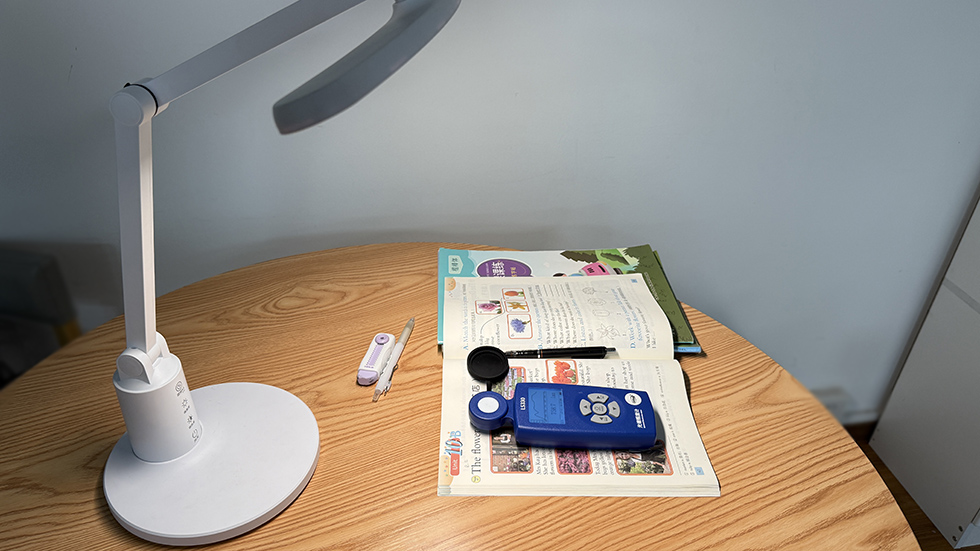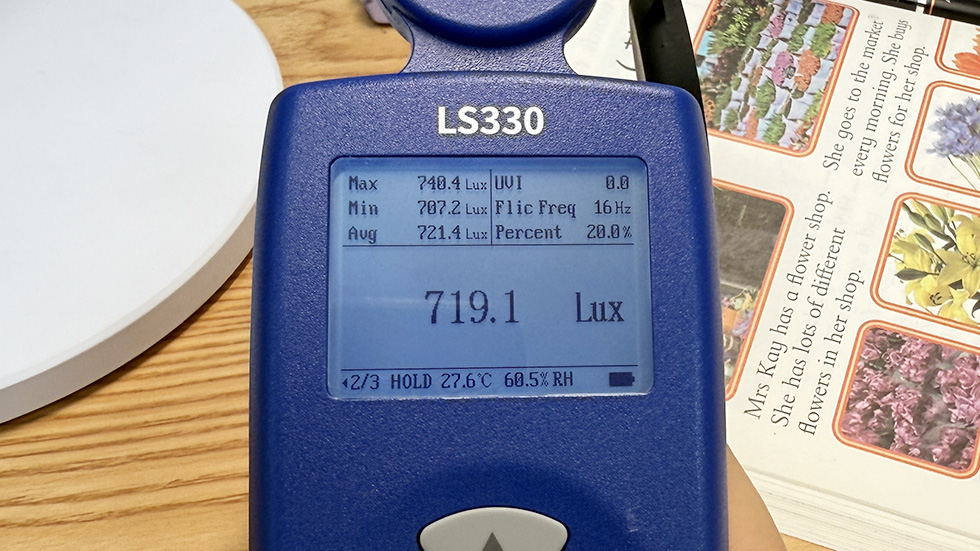One Spectral Illuminance Meter, Effortlessly Evaluating Desk Lamp Optical Performance!
A desk lamp is an important companion for students at their study desks. According to national inspections, about 87.5% of desk lamps currently on the market have issues with insufficient illuminance or uneven lighting. Choosing a high-quality reading and writing lamp can create a comfortable, healthy, and efficient study environment for students. During the selection and testing process, it is essential to use a Spectral Illuminance Meter to evaluate the lamp’s optical performance, including illuminance, illuminance uniformity, color temperature, color rendering index, flicker, and blue light hazard level, among other indicators.

The main functions of a good desk lamp
Clear visibility – providing sufficient, even, and shadow-free lighting.
Comfortable viewing – is achieved by flicker-free lighting, appropriate color temperature, high color rendering index, and reduced harmful blue light, which together help protect eyesight to the greatest extent and reduce visual fatigue. Using a Spectral Illuminance Meter to test these parameters ensures the desk lamp meets healthy lighting standards.
Creating a focused study environment – enhancing learning efficiency and comfort.
Ease of use – allowing adjustments to suit different needs and scenarios.
Evaluation Criteria for Reading and Writing Desk Lamps
According to the national standard GB/T 9473-2022 Performance Requirements for Reading and Writing Task Lamps:
Illuminance and uniformity – For Grade A lamps, the central area illuminance should be ≥ 300 lux with a uniformity ≤ 3; for Grade AA lamps, the requirement is ≥ 500 lux with a uniformity ≤ 3.
Flicker – The flicker percentage should be < 8%, and the flicker index should be either flicker-free or < 1.
Color temperature range – Between 4000K and 5000K, with a chromaticity tolerance not exceeding 5.
Color rendering index (CRI) – The CRI of reading and writing desk lamps should generally be greater than 80.
Retinal blue light hazard – The level should meet RGO (no hazard) or RG1 (low hazard), and a lower blue light hazard ratio is preferable.
Testing Methods for Reading and Writing Desk Lamps
Place the lamp in an indoor environment at 25 ± 1 °C with a relative humidity not exceeding 65% for testing.
Measure at the specified distance of 30 cm or 50 cm.
Set up a 9-point or 13-point grid within the lamp’s illuminated area and use a Spectral Illuminance Meter to measure the illuminance at each point.
Calculate uniformity by evaluating the ratio of the maximum to minimum values — the closer the ratio is to 1, the more evenly the light is distributed.

In the past, testing desk lamps often required multiple devices, such as a spectroradiometer, illuminance meter, flicker tester, and blue light hazard testing system. Now, a single Linshang Spectral Illuminance Meter can perform multiple parameter tests.
Take the LS330 as an example: it can simultaneously measure illuminance, color temperature, flicker, UV index, chromaticity deviation, and color rendering index, while also generating a spectral curve chart. This allows for quick analysis of whether a desk lamp is a full-spectrum LED lamp and provides a comprehensive evaluation of the lighting source’s characteristics.

LS330 test interface

LS330 spectrum curve interface
Conclusion
A good reading and writing desk lamp is an important investment for protecting students’ visual health and enhancing their learning experience. Whether for lamp manufacturers or everyday users, a Spectral Illuminance Meter can be used to accurately test optical performance, ensuring a safe and optimal lighting environment for studying.
- Spectral reflectance, metamerism and whiteness
- About the Selection of LS116 and LS117 Light Transmittance Meter
- How to test the light transmittance of polarizer?
- Where are UV Energy Meters used?
- Why is the 1400nm Solar Film Transmission Meter more Expensive than the 950nm?
- What is Paint Thickness Measuring Device?